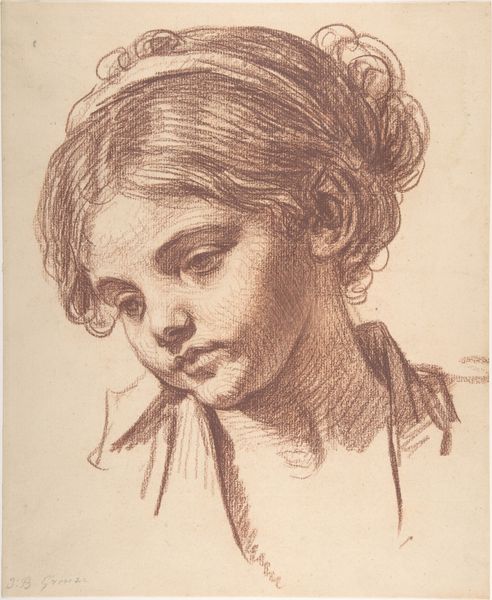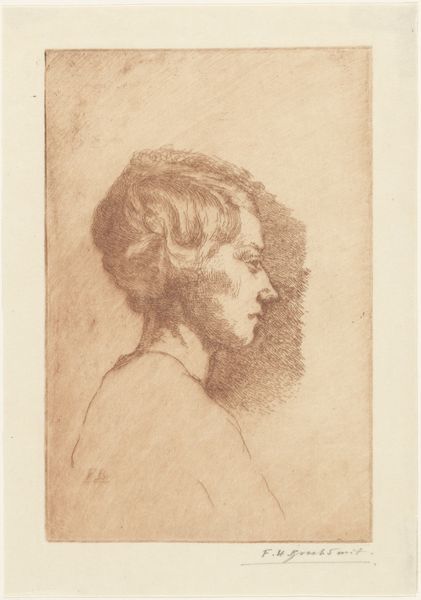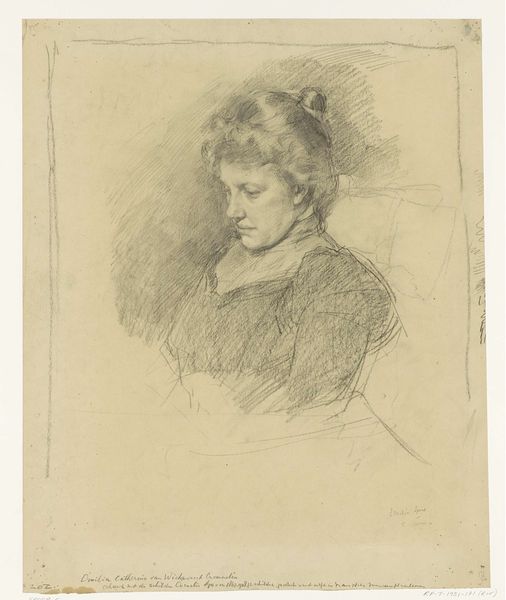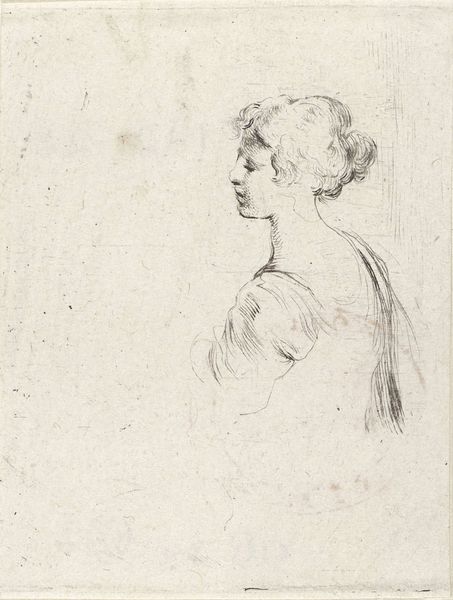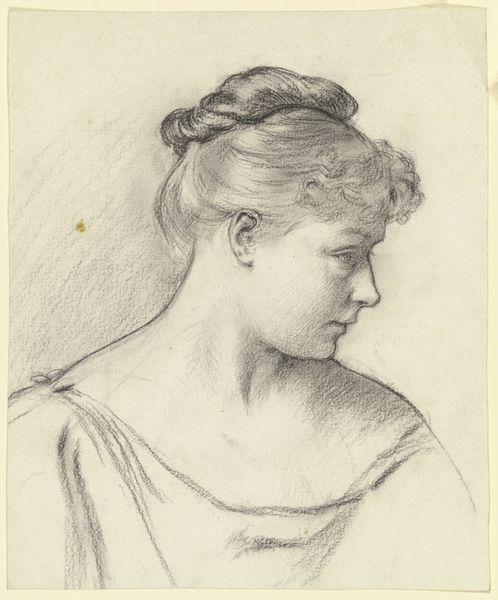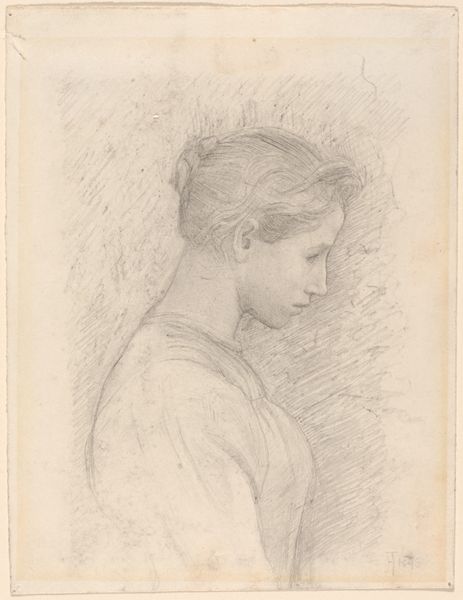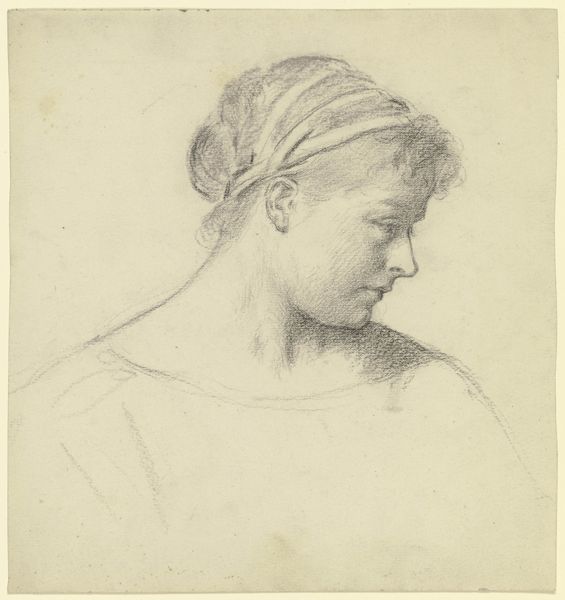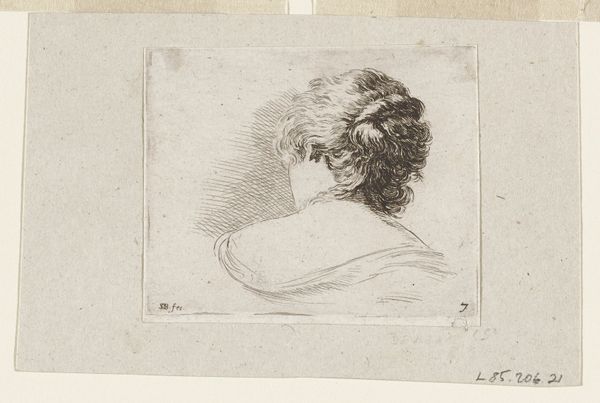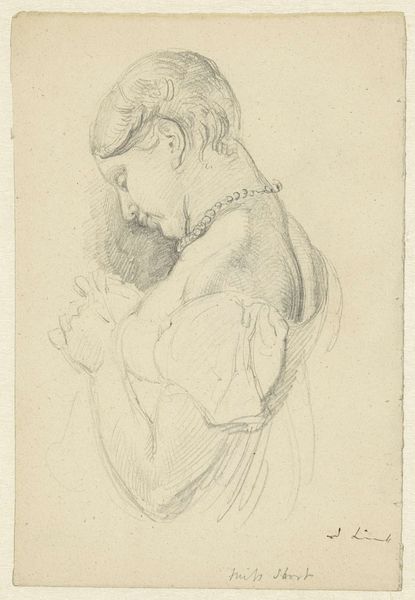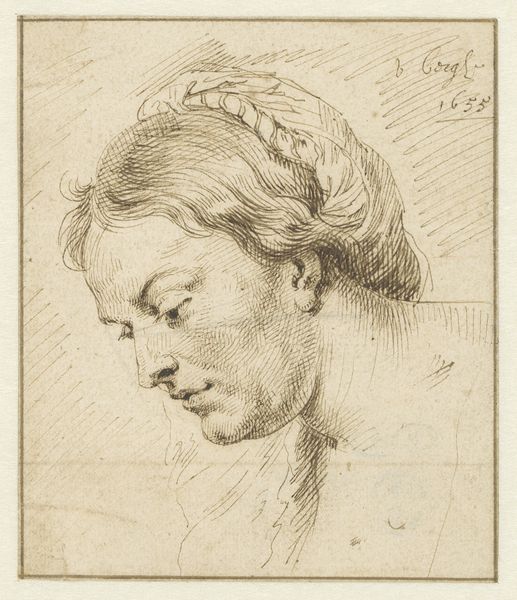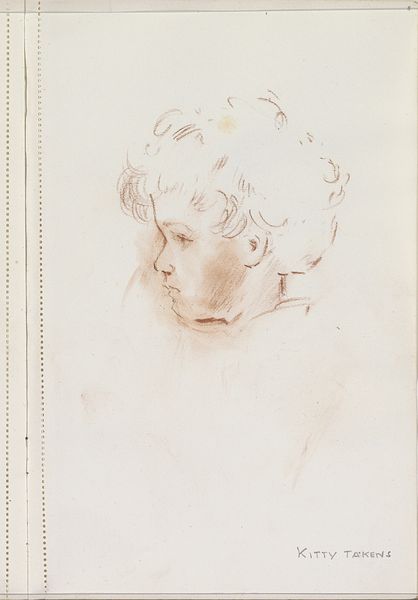
Dimensions: plate: 16.7 × 24.5 cm (6 9/16 × 9 5/8 in.) sheet: 22 × 30.3 cm (8 11/16 × 11 15/16 in.)
Copyright: National Gallery of Art: CC0 1.0
Eugène Delâtre made this etching, Portrait of Madame Delâtre, in France. It is likely that Madame Delâtre was the artist’s wife. Delâtre came from a family of printers and was an innovative printmaker himself, so this image has a particular focus on the technical skill of etching. It is also an intimate portrait that conveys a sense of the sitter's inner life, her pensiveness. In nineteenth-century France, there were powerful social expectations surrounding women, particularly upper middle-class women like Madame Delâtre, who were expected to be demure and domestic. Delâtre's portrait captures some of this demureness, but it also shows a strong-minded individual. Historical sources such as letters, diaries, and census records can give us an even richer sense of the social dynamics that shaped Delâtre's work and the life of his subject. This reminds us that the meaning of art always depends on a particular social and institutional context.
Comments
No comments
Be the first to comment and join the conversation on the ultimate creative platform.

